








President
Louise Goodenough
Haywards Solicitors
Stowmarket
Tel: 01449 613631
Fax: 01449 613851
Email: louise.goodenough@haywards-solicitors.co.uk
Vice President
Benjamin Carver
John Fowlers
Colchester
Tel: 01206 576151
Email: bencarver@johnfowlers.co.uk
Honorary Secretary
Ivana Radovic
Birketts, Ipswich
Tel: 01473 921 716
Email: ivana-radovic@birketts.co.uk
Honorary Treasurer
Louise Cardwell
Ashtons Legal
Tel: 01473 261320
Email: louise.cardwell@ashtonslegal.co.uk
Honorary Council Members
Donna Taylor
Council Member for Suffolk Nexa Law Limited, London
Tel: 020 7504 7071
– Extension 2127 Mob: 07859 896 640
Email: donna.taylor@nexa.law
Karen Dovaston
Council Member for Essex, Dovaston I aw Southend on Sea. Essey Tel. 0800 083 6051 Mob. 07932 360 766
Email: Karen dovasionlaw.co.uk
PRO/PLO
Louise Goodenough
Haywards Solicitors
Stowmarket
Tel: 01449 613631
Fax: 01449 613851
Email: louise.goodenough@haywards-solicitors.co.uk
Education & Training Officer
Amanda Timcke
Birketts
Ipswich
Tel: 01473 406215
Email: amanda-timcke@birketts.co.uk

Dear All!
As I write this, we finally have some sunshine, yay!
I can’t believe that I have completed a year as President of SNELS already. What a year it has been. I have been privileged to meet lots of amazing people within the legal profession and those in firms supporting the legal profession. I hope that these connections I have made will continue after I step down as President.
I would like to say a big thank you to those sponsors who have generously supported events during my presidential Year. Without their support events would not be possible - to name but a few below:
Property Solutions Group & Southey & Co
Kingsfleet Wealth
Bishop & Miller
J M Finn
East Anglian Financial Planning
Anglia Research
Dye & Durham
The Law Society has a busy year this year as they take to the roads for the Bicentennial celebrations. Emails of local events are starting to hit the inbox so please keep an eye out for these and join in with these events as they won’t come around again for some time!!
Ben Carver of John Fowlers is due to take over the next stretch of the Presidency and we are now in the process of arranging the AGM to officially swear him in. Again, invites for this will be out soon. I am sure Ben will make an amazing President.
Final words of wisdom
“Arguing with a lawyer is like wrestling a pig in mud... sooner or later you realise that they like it!”
Thank you all again for a propound year of being President of the best local law society in the land - SNELS.
Louise Goodenough
Louise Goodenough President SNELS


Embarking on a career in law is a rewarding yet challenging journey. It requires dedication, resilience, and a clear sense of direction. To support aspiring legal professionals, we’ve launched a video content series on LinkedIn, sharing practical tips to help you navigate your legal career. Here’s a taster of what you can expect, featuring the first three tips from our series:
The legal profession is demanding, and there will be times when you face challenges that test your resolve. It’s essential to remind yourself why you entered this field in the first place. What was the spark that ignited your passion for law? Whether it was a desire to advocate for justice, an interest in corporate law, or a fascination with legal intricacies, keeping this motivation in mind will help you stay focused and committed throughout your journey.
Having a clear vision for your legal career is crucial. What does success look like to you? Is it becoming a partner at a prestigious firm, launching your own practice, working in-house for a major corporation, or making a difference in people’s lives?
Define your long-term goals and use them as a guiding force in every career decision you make. Your vision will serve as your professional compass, ensuring that every
step you take is aligned with your ultimate ambitions.
Tip 3: Plan the Steps to Your Goal
Once you have a clear vision, break it down into actionable steps. What is the next immediate step that will bring you closer to your goal?
This could be acquiring additional training, networking with industry professionals, gaining relevant work experience, or improving a specific skill set. Additionally, consider any obstacles that might stand in your way and develop strategies to overcome them. Success in law is not just about talent—it’s about perseverance and strategic planning.
These first three tips lay the foundation for building a thriving legal career. But there’s more! Our LinkedIn video series features a total of eight essential tips to help you succeed in law. Keep your eyes on LinkedIn for the full series and gain deeper insights into navigating the legal profession with confidence and clarity.
What are your biggest career challenges in law? Send me a message—I’d love to hear from you!
Or just message me ‘CHALLENGE’ and we can book time to talk things though.
I am always happy to talk about career plans but if you are looking to talk through a specific issue without any desire to look at other roles then I can offer career coaching on an hourly rate. I introduced this on request, as for some people who are looking at internal promotion or even who are exiting firms on their own terms, this can work better as an option to get the support you need without looking at the market for a move.
Message me ‘COACHING’ to find out more. The headline rate is at £90+ VAT per hour at the moment.
Clara Rose LL.B LL.M
Clara Rose Consultancy
www.clararoseconsultancy.co.uk 020 3286 7884

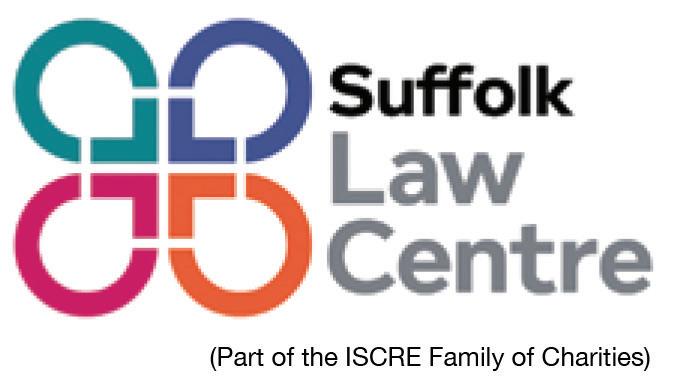

I retired from practice as a solicitor 18 months ago but knew that I was not fully ready to leave the law behind. I had heard of Suffolk Law Centre and its important role in providing access to justice for local people who otherwise would go unadvised or unrepresented. On approaching SLC, its discrimination and employment team assured me that as a former employment lawyer, I could be of some use!
I have thoroughly enjoyed my time with the team. I come in one day a week and can be asked to help on a range of cases and tasks: I have drafted pleadings, helped negotiate settlements, assisted with lengthy witness statements and provided advice. I obviously don’t have my own caseload but have supported the lawyers with complex on-going matters and definitely get ‘under the bonnet’. My work is undertaken with appropriate supervision, so I never feel abandoned to my own devices or adrift in the mire of legal aid or grant aid provisions! And contrary to expectations, whilst the facilities are obviously not lavish, there is excellent IT support and legal resources. Everything is harnessed towards providing a high-quality and responsive service.
As well as the intellectual stimulation of the legal work, I really enjoy meeting our clients, referred with various descriptions of the challenges faced from local employers or in Suffolk workplaces: pregnancy discrimination at a hair salon, racist comments at a nationwide hospitality chain and regularly a reminder as to how disabled people face invisible and subtle (or not-so-subtle) barriers as they try to maintain their independence at work.
As you would expect, the atmosphere at SLC is collegiate and supportive: services are delivered by a mixture of employees and volunteers who all work together, discussing trickier issues, providing cover for each other and keeping their nose firmly to the grindstone of providing access to justice, an increasingly hard task in the current context. Whilst I have volunteered in early retirement, SLC also has students starting out on their careers and working lawyers who join the telephone advice clinics after business hours. My life is richer for the experience - long may Suffolk Law Centre thrive.
Anne Richardson Volunteer at Suffolk Law Centre Suffolk Law Centre is a charity, offering free specialist
legal advice and casework in areas of: Discrimination, Family (Private Children) and Housing. In addition, we run initial legal advice telephone clinics in a range of social welfare matters, delivered pro bono by legal volunteers.
If you would like to know more about volunteering options, or want to support Suffolk Law Centre in other ways, please contact: Sue Wardell, Director of Operations and Development sue@suffolklawcentre.org.uk


Probate Genealogy is a crucial part of the legal services world, helping Private Client professionals with their workload on a daily basis. Also known as probate research, the core service offerings are locating difficult to find beneficiaries named in wills or identifying the closest relatives in intestacy and Court of Protection cases. Research in this sector can be complex, detailed and often international, as can regularly involve crossing national borders. Case managers simply follow the research, wherever in the world it leads them.
Probate Genealogy is a knowledge industry. It is work undertaken by dedicated and skilled people using both new and more traditional methods. The expertise lies in locating and correctly applying historical records and data to identify individuals, assets, and estates. Over time, a ‘gut feel’ for things develops as knowledge is acquired.
You might think that in this increasingly connected world that we live in, finding beneficiaries would be relatively straight forward, yet this is frequently not the case. On a general level, people forget to update their contact details when they move residence (which happens more often now) and can drop off electoral rolls and other government databases. More specifically, in some instances, people simply do not want to be found and make it difficult to be located.
In cases of intestacy, the work of probate genealogists becomes particularly important as it can often be unclear as to whom is entitled to inherit assets where no valid will is in place to follow. In fact, this is a particularly prevalent issue with industry reports stating that over 50% of adults in this currently do not have a will in place.
The research work carried out checking family trees and verifying entitled beneficiaries can save both probate and Court of Protection professionals a huge amount of time
and effort. Probate research really dovetails with the work being undertaken by those in Private Client teams up and down the land; in fact, all over the world.
A genealogist is also able to assist Court of Protection solicitors making Statutory Will applications by verifying the family trees and identifying existing or prospective beneficiaries in a discreet and empathetic manner. A further and often overlooked service that can also be offered by genealogist firms is access to ‘living person’ financial asset searches.
At locally based Anglia Research, we have a wealth of experience in providing help and guidance on Court of Protection cases and are proud supporters of the Professional Deputies Forum.
The importance and relevance of probate genealogy firms is ever increasing, but it surprises many to learn that it is an unregulated industry, with no set entry requirements. Therefore, reputation and professionalism are key, and most firms (though not all) have suitably qualified staff undertaking the research work.
For example, our case managers are either qualified paralegals or working their way towards becoming qualified. We were delighted be awarded the Best Legal Professional Supplier Award at the illustrious and independent National Paralegal Awards last year in recognition of our support to the legal world.
The takeaway message here is: By using a probate genealogist, a legal professional is effectively ‘outsourcing’ elements of their work – there must be confidence that the work carried out by a genealogist is accurate, to a high standard, and legally sound.
Probate genealogy is about so much more than just finding missing beneficiaries or reconstructing family trees –other services include assistance with asset reunification, financial asset and bankruptcy searches, Missing beneficiary indemnity insurance, and even assisting with a law firm’s Unclaimed Client Funds obligations.
So next time you are faced with a not-so-straight forward case, do not be afraid to instruct a reputable probate genealogy firm such as Anglia Research to carry out the heavy lifting for you.
Get in contact to find out more: legal@angliaresearch.co.uk / 01473 350350.


The Budget of October 2024 totally changed the prior understanding of estate planning. There were significant changes made to the way in which an individual’s assets will be treated for inheritance tax purposes with the most significant change being the inclusion of personal pension assets within the calculation of an estate for inheritance tax.
This change is due to take effect in April 2027, but there are a number of significant areas of clarity and understanding that need to be resolved prior to that. It is worth noting that although we have seen many individuals discuss starting withdrawals from their plans in order to make gifts to their family, we believe that it is wise not to act in haste otherwise we may find ourselves repenting at leisure.
It is important to note that because this change does not take effect until 2027 any estate of an individual who dies prior to that will still be treated under the current rules, and therefore the value of their plan would not be included in the calculation of their estate.
This is certainly a matter that we are keeping on the agenda, but don’t yet feel that it is right to make changes until we have complete clarity and understanding of the process involved and the impact that will have on individuals.
One area that is currently being explored is whether the assets which are held within pension arrangements could also benefit from IHT exempt investments. So, for

example, using Business Relief or Agricultural Relief related assets within a SIPP could assist in reducing the effect of inheritance tax. We will know soon enough.
You will also be aware that AIM stocks will now only benefit from a 50% inheritance tax reduction, therefore having a 20% tax charge applied on death, as opposed to being inheritance tax free at the moment. This change takes effect from 6 April 2026.
The lifetime limit for Business Relief and Agricultural Relief has been introduced at £1 million per individual subject to the asset/investment being held on the date of death. Any assets held in excess of £1 million attract relief at 50% of the IHT rate (therefore 20% currently).
However, please don’t forget that there are numerous other investment related strategies that can reduce an individual’s exposure to inheritance tax and these are unaffected by the changes introduced in the last Budget. Many of these have trust related solutions and vary in their accessibility, from those which still permit immediate access by the settlor through to those which will provide no access during their lifetime.
If there are any issues that you would like to discuss on this increasingly complex area, please don’t hesitate to get in touch as it is something we are seeing our knowledge and specialism having an increased benefit to those who require this form of advice.

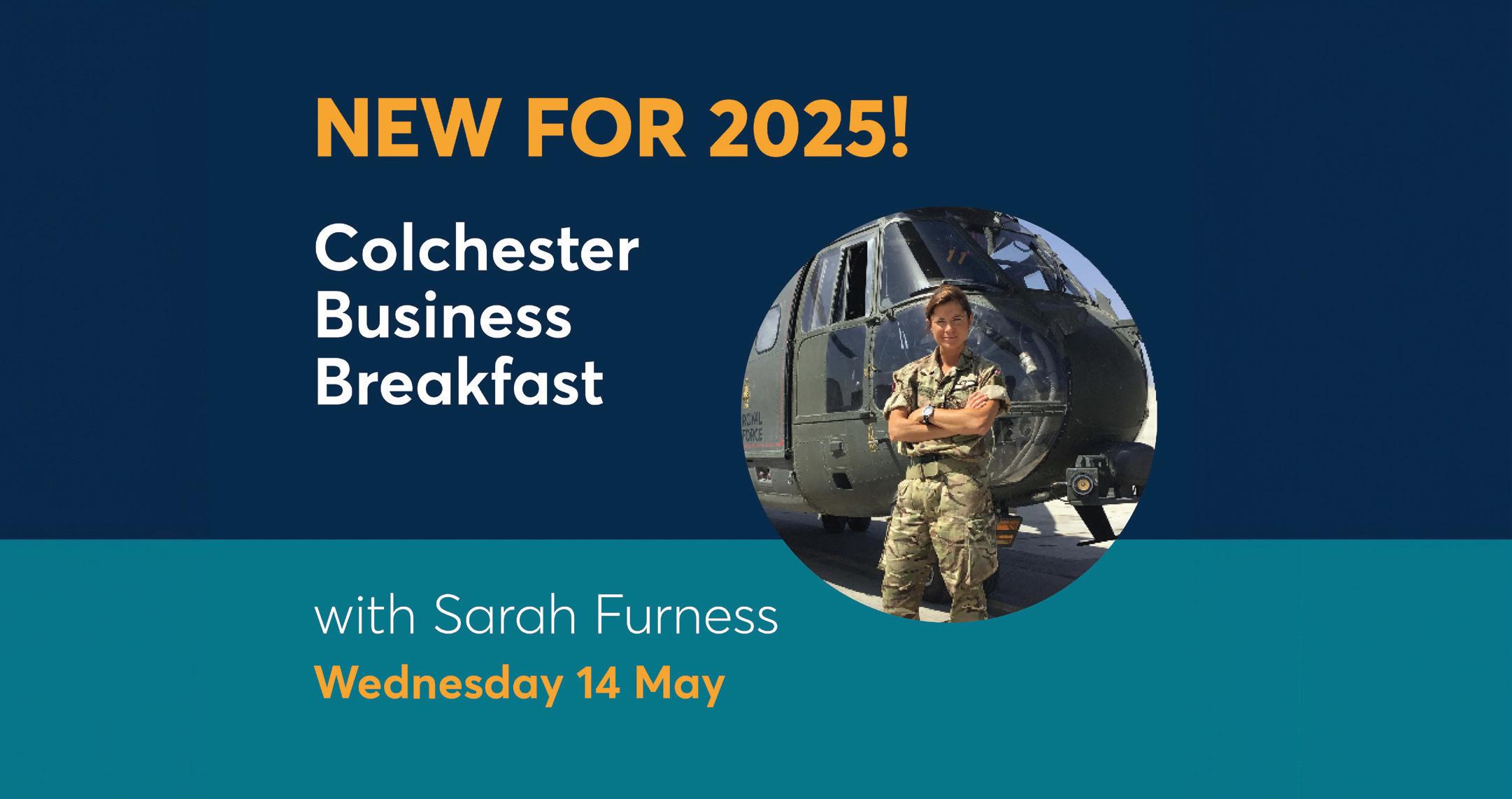
Chartered Accountants and Business Advisors, Larking Gowen, is hosting a brand-new event for the Essex business community with their first business breakfast of the year on Wednesday 14 May 2025
Larking Gowen Business Breakfasts are designed to provide local entrepreneurs, business owners, and professionals with a platform to network and share insights for success in the year ahead. These events are brand new for Colchester, Essex and have been well received in the business community across Suffolk and Norfolk.
Dawn Lay-Flurrie, partner in the Business team at the firm’s Colchester office, who has over 30 years’ experience in accountancy and advisory firms in Essex, is looking forward to building new relationships in the area. Her expertise covers areas such as business planning, financing, restructuring, exit strategies and tax optimisation. Dawn also has experience in dealing with complex and sensitive issues such as insolvency and restructuring.
Dawn said: “These events are massively popular for the teams in our Ipswich and Norwich offices, so I was keen to get these started in Essex, introducing the community to not just what Larking Gowen is about, but also the value previous speakers have offered on resilience and mindset – something so important for business leaders right now.”
For their inaugural Essex-based Business Breakfast, Larking
Gowen is excited to announce former RAF pilot and Squadron Leader Sarah Furness as their guest speaker. Sarah will share real-world insights on building resilience and developing the courage and skills needed to perform under pressure. As a best-selling author and coach in mindfulness and cognitive therapy, Sarah will provide tips and tricks to help attendees be the best version of themselves. She will delve into themes of uncertainty, tolerance, mistakes, and self-belief, helping discover what we can all do to future-proof our mindsets.
As Sarah says, “Fear is contagious, but so is courage”.
Attendees will enjoy breakfast while engaging in vibrant discussions and networking with other business professionals. These events are a great opportunity for you to bring a client to a fun and engaging event.
Joining them in October for the Autumn breakfast will be motivational speaker Ben Coomber. Sign up to their mailing list* to make sure you don’t miss out when bookings open.
Tickets for the Summer event are available through Eventbrite** now, or at larking-gowen.co.uk/events and advance registration is required.
* https://www.larking-gowen.co.uk/sign-up/
** https://www.eventbrite.co.uk/e/colchester-businessbreakfast-tickets-1127581650069?aff=Website

Introduction
The impact of climate change on flood risk is becoming an increasingly pressing issue for property transactions, particularly in low-lying areas such as Fenland. Rising sea levels, extreme weather patterns, and evolving flood defence strategies all have a bearing on property due diligence. For conveyancers, understanding these risks is critical in ensuring clients are fully informed before committing to a purchase.
The changing flood landscape in Fenland
Historically, the Fenlands have been highly susceptible to flooding due to their flat terrain, proximity to tidal influences, and reliance on man-made drainage systems. The Fenland Level 1 Strategic Flood Risk Assessment (SFRA) indicates that approximately 67% of the district falls within Flood Zone 3, meaning it is considered at high risk of flooding. Climate change is expected to worsen this situation, with projections suggesting that sea levels could rise by up to one metre by 2100, increasing the risk of both tidal and river flooding.
In addition to rising water levels, changes in rainfall patterns are also a significant concern. The frequency of intense rainfall events is expected to increase, leading to more occurrences of surface water flooding. Furthermore, groundwater flooding could become more common as prolonged periods of wet weather heighten soil saturation levels. These factors, coupled with the natural subsidence of Fenland peat soils, pose a growing challenge for property developers and homeowners alike.
for property transactions
A recent study by Geodesys revealed that 1 in 3 customers do not consider a flood report for every transaction,
reasoning that property location plays a big part in their decision-making. For conveyancers operating in the region, flood risk assessment is a crucial aspect of due diligence. The presence of flood risk can significantly impact mortgage lending, insurance premiums, and the long-term value of a property. Many lenders now require detailed flood risk reports, beyond the standard Environment Agency flood zone classifications, before approving finance on properties in high-risk areas. To ensure thorough due diligence, conveyancers should look for a full flood risk report providing a comprehensive assessment of the risk to the property.
Insurance considerations are also becoming more complex. While the UK government’s Flood Re scheme provides affordable insurance for properties at risk, it is only available for homes built before 2009. This means new-build properties in flood-prone areas may face difficulties securing viable insurance cover, which could impact their desirability and resale value.
How conveyancers can support clients
A comprehensive approach to flood risk assessment is essential for conveyancers advising clients in Fenland. Beyond obtaining a standard flood search, solicitors should consider climate change projections, the effectiveness of existing flood defences, and potential mitigation measures. The presence of sustainable drainage systems (SuDS), flood barriers, and raised building elevations can influence a property’s resilience against future flooding.
In addition, local government planning policies are increasingly considering climate change when approving new developments. Conveyancers should ensure that clients purchasing new properties understand any
planning conditions or obligations related to flood risk mitigation. In some instances, property owners may be required to contribute to the maintenance of local flood defence schemes, which is a financial consideration for potential buyers.
Jake Hawkey, Account Partner at Landmark Information Group, comments: “As climate change continues to reshape our environment, the property market cannot afford to overlook its longterm impact. Conveyancers and solicitors must now consider both current and future flood risk to homes and real estate. Landmark is proud to work with Geodesys to provide the foresight needed to provide comprehensive advice in a digestible way that’s easy to communicate, ensuring investments are protected against the uncertainties of a changing climate.”
Conclusion
As climate change increasingly alters the flood risk landscape of Fenland, conveyancers play a crucial role in informing property buyers about these associated risks. By keeping current with flood risk assessments, insurance implications, and local mitigation efforts, legal professionals can offer vital guidance that protects their clients’ investments and ensures long-term security. In an era of growing environmental uncertainty, conducting thorough due diligence in flood-prone areas has never been more crucial.
Geodesys offers a range of flood reports and combined environmental risk searches, providing conveyancers with a comprehensive understanding of flood risks to their clients and enabling them to make more informed decisions about their purchase before proceeding.
To find out more visit: http://www. geodesys.com

really must know about
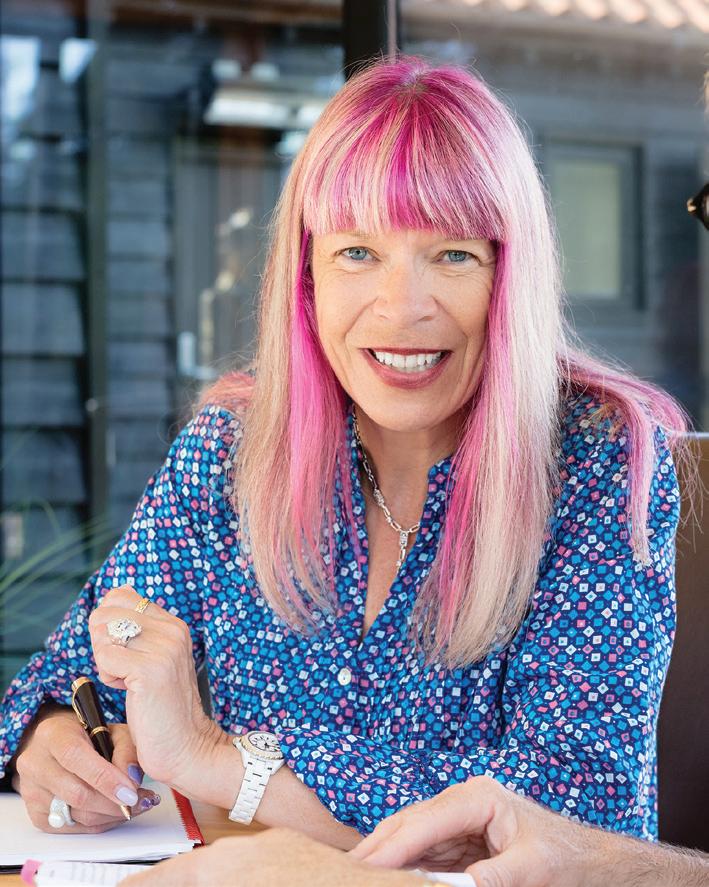
At FHM Forensic Accounting we are engaged to value businesses of all shapes and sizes. Formal business valuation reports may be required in financial disputes and matrimonial matters. They are also obtained by business owners to assist in strategic and succession planning and for tax planning. Typically we undertake 50 to 60 business valuations each year and in addition are instructed to critique valuations prepared by accountants and other experts.
In this article we seek to debunk common myths about business valuation and to share insight on the key drivers of business value.
Myth 1: Businesses are worth a multiple of profit
There are a number of reasons why a business cannot be valued simply by applying a multiple to the profit including:
• Two businesses generating the same profits may have very different asset bases eg cash reserves, property ownership, debt etc
• Two businesses may be reporting the same profits but have very different prospects for future trading
• Reported profit can be manipulated and before applying a multiple the valuer must assess the appropriate measurement of profit
• Businesses may report losses and yet still have a value
• The buyer of a business is not paying for historical profits, they are motivated by their assessment of future cash flows
Myth 2: Business value is determined by revenue
A common myth amongst entrepreneurs is that a business’s value is determined by applying a multiple to revenue. Revenue is a factor but two businesses generating the same turnover may have very different values. Valuation considers the profit generated from turnover, the cashflows, sustainability of the trading performance and the potential for future growth.
There are certain businesses such as accountancy practices, law firms and opticians where a multiple of turnover may be a starting point in a valuation by a consolidator who is looking to bolt-on revenue.
Myth 3:Business buyers pay for great potential
Business owners can make wild claims about the great potential of their business. Unfortunately business buyers are highly sceptical about such claims. The obvious next questions is why the seller is not exploiting that potential themselves. Business potential is relevant in marketing your business but it is unlikely to result in a premium price.
Myth 4:There is a fixed figure for the value of a business
Business owners often expect the business value to be a concrete figure. In reality valuation is subjective and dynamic. The valuer will set out the purpose of their valuation, the methodology and the assumptions they have used. The value given is a snapshot at a point in time. Regular updates to business valuations are needed whether the valuation is for litigation or commercial planning.
Myth 5:Valuation is just about the numbers
Whilst robust financial analysis is key to the valuation process, we also consider qualitative matters such as intellectual property, the management team, customer loyalty and business pipeline.
Myth 6:Start-ups can’t be valued
Valuing start-up businesses is complex and particularly subjective but there are a number of appropriate methodologies that be adopted. When valuing businesses such as start-ups it may be appropriate to adopt more than one methodology.
Myth 7: A company with no assets has no value
A company with minimal net assets (or even net liabilities) on the balance sheet may indicate minimal market value. However there are also situations where companies with minimal net assets have substantial value. It is possible a business is generating significant profits for the business owners but these are extracted each year so the retained reserves are minimal. The valuation will be based on the expected future maintainable profits for the owners.
Myth 8: A 25% shareholding is worth 25% of the value of the whole business
In terms of business valuation, a quarter of the cake is not necessarily worth a quarter of the whole cake.

The concept of the minority discount comes up regularly in the valuation of private companies including in divorce cases and shareholder disputes. When valuing shareholdings of less than 50%, the application of a minority discount can have a very significant impact on the valuation.
For example, say the valuation of the mythical company Fruit Cake Ltd is £10 million. Mr Raisin, a shareholder, has a 25% shareholding and so it might be assumed that his 25% shareholding is worth £2.5 million. However, if a minority discount is applied - and adopting the figures in the ACCA Technical Guidance 167 - a discount of 45% to 55% may be applied. For example, using a 50% discount reduces the value of Mr Raisin’s shareholding from £2.5 million to £1.25 million. A minority discount reflects the probable reduction in the value of a minority shareholding due to the lack of control (influence) and marketability.
Myth 9: A business broker can provide a reliable valuation
Business owners are frequently offered free market appraisals of their business. Such valuations are prepared with the objective of convincing you to appoint them to sell your business. Typically the valuations are not prepared with the requisite level of financial analysis and scrutiny. Business owners who require a market appraisal should invest some time and money in engaging an independent business valuer.
Myth 10: Why are we debunking the myths?
Inaccurate valuations and flawed valuation methodologies lead to unrealistic expectations, poor strategic planning and protracted disputes. Business owners should view business valuation as a key tool in managing their business and maximizing shareholder wealth.
Fiona Hotston-Moore FHM Forensic Accounting www.fhmforensic.co.uk


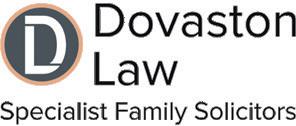
In a recent family court case, HK v SS [2025] EWFC
5 (B) , the Family Court sackled the complexities of reconciliation and divorce under the new legal framework introduced by the Divorce, Dissolution and Separation Act 2020 (DDSA 2020). This case provides valuable insights into how the court exercises its discretion when parties reconcile after a conditional order has been granted.
Background
The parties, HK (the applicant) and SS (the respondent), were married in June 2011. After 11 years of marriage, they separated, and HK applied for divorce in May 2022, after the new ‘no fault’ divorce came in. The conditional order was granted in October 2022, but neither party applied for the final order immediately. Instead, they reconciled in March 2023, only to separate again in June 2024.
The key issues before the court were:
1. Whether a conditional order should be made final despite the parties’ reconciliation for 15 months.
2. If not, whether the conditional order should be rescinded and the divorce application dismissed.
3. How the court should exercise its discretion under the new rules.
HHJ Simmonds, as the National Lead Judge for Divorce, provided guidance on these issues. The DDSA 2020
introduced significant changes, including the removal of the need to prove fault and the introduction of a sole ground for divorce: irretrievable breakdown of the marriage. The court must take the applicant’s statement as conclusive evidence of this breakdown.
The court considered the reconciliation period and its impact on the divorce process. Under the new rules, parties can reconcile for up to a year without any court enquiry. However, if the reconciliation lasts longer, the court must determine whether the original basis for the divorce still stands.
HHJ Simmonds concluded that an attempted reconciliation of up to two years should not bar the court from making a final order. This period allows parties to attempt reconciliation without feeling pressured by court-imposed timelines. In this case, the reconciliation lasted 15 months, and both parties agreed that the marriage had irretrievably broken down. Therefore, the court granted the application for the final order.
The case of HK v SS highlights the court’s flexible approach under the DDSA 2020, allowing parties time to reconcile while ensuring that the divorce process remains fair and straightforward. This judgment provides clear guidance on how the court will handle similar cases in the future, balancing the need for finality in divorce proceedings with the possibility of reconciliation.


Commentary
This case concerns an important boundary matter that sometimes arises for orthopaedic experts in relation to biomechanics and ergonomics. These are areas of expertise for which the orthopaedic surgeon’s ‘working knowledge’ may be sufficient, thereby avoiding the time and expense of instructing a further expert just as in cases where knowledge and experience of orthopaedics in general is sufficient and it is not necessary to instruct an orthopaedic subspecialist.
Learning points
• In a case where biomechanical or ergonomic issues may arise, it is advisable to explain your knowledge of the subject or subjects.
• Indicate that you will, if you consider it advisable, recommend the instruction of a biomechanical expert or ergonomist and, if appropriate, defer to them.
• Be in a position to give evidence about possible causation in specific situations relevant to the instant case.
• Be in a position to provide references to studies showing a correlation between load and injury.
The case
The pursuer’s case was that she suffered loss injury or damage as a result of the defender’s fault and negligence. She was employed as a production operative at Mathiesons Bakery in Larbert. To succeed, the pursuer was required to prove that she was engaged in a manual handling operation, that there was a foreseeable risk of injury, and that she was injured by the operation.
History
On 31 May 2020, the pursuer was primarily engaged in work on the production line. On that day, she was instructed to collect twelve trays of cream for use on the production line. The trays were to be collected from a window next to the production line, which formed part of the sanitiser tunnel within the defender’s production plant. Each tray contained a ten litre bag of cream. Each tray was plastic and a little wider than the pursuer’s body. The pursuer picked up each tray at about hip or waist height and lifted it to almost level with her shoulders. Her arms were slightly extended in front of her. The trolley was to the pursuer’s left hand side at 90 degrees to the window from which she was collecting the trays. The purser lifted around eight or nine trays and stacked them in turn on a flat trolley. The pursuer immediately felt pain in her back after lifting the ninth or tenth tray from the window. The pursuer continued to work and took all twelve trays to the production line.
The following day when the pursuer got up for work she was unable to get out of bed immediately and fell to the floor when she tried to do so. The pursuer was absent from work for three months and her symptoms resolved within six months.
Her skilled witness was a consultant orthopaedic surgeon. His evidence was that, if the court accepted the pursuer’s evidence of lifting trays approximately 10 kg in weight from waist height to shoulder height on a trolley to her left resulting in pain in her back, he considered that to be a mechanism that could cause the pursuer to suffer injury.
The skilled witness explained that in the course of studying for the
FRCS examinations, there were a number of modules on basic sciences including biomechanics dealing with the operation of the spine, lower limbs, hands, knees and arms. In his evidence in chief he agreed that there was a risk of injury if a female lifted a weight of 10 kg from a low height to shoulder height with her arms partly outstretched. This was evident from basic mechanics and how a load is applied. If a load is at close distance to the spine, if the arms are outstretched the load is further from the spine and the greater the loading on the spine as a result. Risk of injury could be reduced by reducing the load, the height, or the distance away from the spine. That would include not lifting as high or as heavy a load.
In cross-examination, the skilled witness said that the higher the load, the higher the relative chance of injury. He was not immediately in a position to provide references to a study showing a correlation between load and back injury, but referred to health and safety regulations which were very clear about load and risk.
So far as foreseeability was concerned, the defender submitted that the skilled witness did not give evidence about the threshold load for the risk of injury and did not give evidence about height and distance in relation to risk. It was submitted that the court required to have evidence about what lesser load and/or height would have avoided injury.
Counsel for the defender submitted that biomechanics and ergonomics are both recognised bodies of knowledge and are separate from the core specialism of the pursuer’s skilled witness, a consultant orthopaedic surgeon, notwithstanding that in the course of studying for the FRCS examinations, there were a number of modules on basic sciences including biomechanics. It was submitted that the issue really was one for an ergonomist which the pursuer had attempted to introduce but with which she had decided not to proceed.
The sheriff, having regard to the skilled witness’s training in biomechanics, was satisfied that, in principle, and subject to the ground being laid in evidence, he was qualified to give evidence about risk of injury in carrying out lifting at least at the level of principle as to whether certain types of lifting activity carry foreseeable risk of injury. The problem, however, was that the sheriff was not satisfied on the evidence he heard that the skilled witness was in a position to give evidence about possible causation in specific situations. For example, at what carried weight would the risk of injury in a particular lift be more than de minimis; or again, how many repetitions of a particular lifting operation would give rise to a foreseeable risk of injury, and it was evidence at that level of detail which was wanted and required.
The sheriff’s finding was that the pursuer did not suffer loss injury or damage as a result of the defender’s fault and negligence.
Link to the judgment: https://www.scotcourts.gov.uk/media/ gmrpnrrk/2024scedin43-agnieszka-swierzko-against-mathiesonsbakery-limited.pdf
Keith Rix EWI


Summary
The judge found that the evidence of the claimants’ psychological expert, Dr A, fell well below the standard to be expected of a competent expert witness, both as to form and as to substance.
Learning points
• Make sure that you understand and comply with the relevant procedural rules, practice directions and guidance, including all required statements and declarations.
• The EWI recommends that expert witnesses periodically undertake training to refresh their practice and eradicate any errors that may have crept in.
• You can also use a report best practice and compliance checklist, such as the one in the EWI Knowledge Hub, to ensure that your report is compliant.
• Always reference any sources you have relied on in forming your opinion and make sure you refamiliarise yourself with those sources as part of your preparation for any joint meetings or cross-examination.
• If you are quoting from an article or any other document, always clearly acknowledge the source of the quoted passages.
• Make clear in your report if a source you rely on represents a minority opinion or if the author has a vested interest in the acceptance of their views by the court.
• Do not include anything in your report that you would not be able to explain fully to the court.
• Make sure you are fully prepared for cross-examination. You should have at least reviewed yours and your opposing expert’s reports, reviewed any joint statement, and made sure you are familiar with the evidence bundle.
• If, during cross-examination, you are confronted with a compliance error you have made, avoid excuses or statements that can sound dismissive like “It’s just an error” or “My reports are normally compliant”. It is better simply to accept that you have made an error, apologise to the court, provide a genuine explanation as to why the error was made, and clearly explain what, if any, impact you believe the error would have had on your opinion.
The case
The case concerns claims arising from allegations of sexual and financial abuse and exploitation against the defendant, who is the priest and founder of the Temple to Baba Balak Nath in Coventry. Baba Balak Naith is a sect of Hinduism originating in the Punjab.
The expert evidence
Both parties called expert psychological/psychiatric evidence. Dr A, a consultant psychologist, acted on behalf of the claimants, and Professor Andrew Maden, a consultant psychiatrist, acted on behalf of the defendant.
Dr A’s evidence
Dr A produced four reports and an agreed joint report with Professor Maden. Dr A told the court that the contents of her reports were true to the best of her knowledge and belief. When cross-examined, she confirmed that she had provided reports previously in cases under the Civil Procedure Rules and she was familiar with CPR Part 35, the Practice Directions to Part 35, and the Guidance for Experts in Civil Claims (‘Guidance’).
Compliance errors
Despite her assurance that she understood her duties, Dr A made a number of significant compliance errors. Her reports only included the statement of truth and did not include the specific statements required in Part 35.10 (2) and the Part 35 Practice Directions 3.2 (9).
35.10 (2) At the end of an expert’s report there must be a statement that the expert understands and has complied with their duty to the court.
3.2 (9) contain a statement that the expert –
(a) understands their duty to the court, and has complied with that duty; and
(b) is aware of the requirements of Part 35, this practice direction and the Guidance for the Instruction of Experts in Civil Claims 2014.
When asked why her reports did not include these statements, Dr A did not provide an explanation, simply stating that “It’s just an error.”
When asked why one of her reports did not include a list of documents or an appendix as required by paragraph 55 of the Guidance, Dr A replied “I don’t know. I normally do that as well”. Dr A had also failed to include a summary of conclusions in the report as required by paragraph 62 of the Guidance.
Errors of substance
Matters got worse for Dr A when it came to the substance of the report. Continues over page...

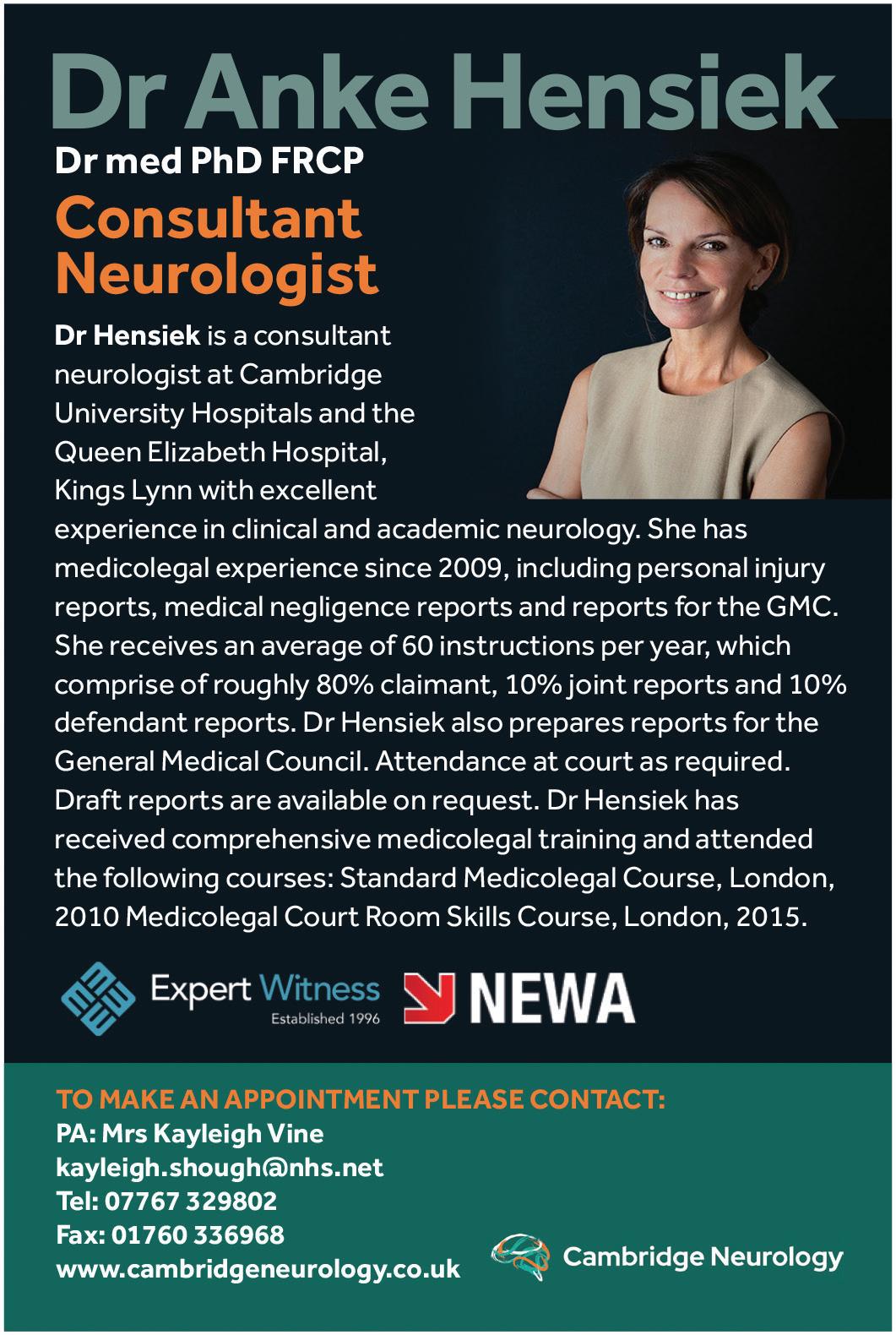

Dr A accepted that there were factual issues and that there was a dispute as to whether the defendant could have sexually abused the claimants in a room at the back of the Temple, when the defendant argued that the room was visible from the Temple and there was no privacy. However, Dr A set out in her report that that room could have been disassembled, a supposition that was not based on any clinical evaluation or any evidence. Dr A conceded that she should not have made that statement, and she would not have included it if instructed by the defendant. The judge found that in relation to that passage in her report, Dr A “had been partisan and lost sight of her role as an expert and her duty to the court.”
Dr A confirmed that she believed she had cited all the literature she had relied on in support of her report as required by paragraph 13 of the Guidance.
Counsel for the defendant pointed out that five paragraphs in her report were plagiarised from an article by Dr Amanda Lucia of the Department of Religious Studies, University of California- Riverside. These paragraphs had been lifted straight out of that article and passed of in Dr A’s report as if they represented her opinion.
Dr A had not acknowledged the source of these passages or listed Dr Lucia’s article in the list of materials she had relied on.
Dr A said she was presenting these paragraphs as if they were her own because she held the same opinion as Dr Lucia. However, she accepted that she had not changed the wording, except in places where she had added her own words to make it look as if the section represented her own opinion.
The judge noted that:
“[i]t is difficult to imagine a more blatant breach not just of the provisions of Part 35, the Practice Direction and the Guidance, but, more fundamentally, an expert’s obligation to the court because these passages were, in effect, a deception practised on the court by Dr A in pretending that these passages were her own words, representing her own opinions, rather than the repetition - regurgitation if you like - of the views and opinions of Dr Lucia.”
In one instance, Dr A was unable to explain the meaning of a term in the passages copied from Dr Lucia relating to the “guru’s prasad”. Dr A could not recall what this term meant, saying she had been told lots of things during interviews with the claimants which she wrote down, although this couldn’t recall if that was the case with this term. The judge noted that “[t]his was a further attempt to deceive the court… Dr A knew perfectly well that she wrote those words because she lifted them from Dr Lucia’s article, not because they were spoken to her by any of the claimants.”
It also became clear that Dr A was not fully familiar with the contents of her report. Under cross-examination, she
initially stated that she did not believe that the claimants were suffering from Religious Trauma Syndrome (‘RTS’), she had just stated that is what some professionals believe. However, when it was pointed out that her report stated that “[t]he damage that [RTS] or spiritual abuse has caused these claimants has been vast and even debilitating”, she acknowledged that her previous reply was wrong.
When asked why she said she couldn’t remember this report, she acknowledged that she had not read it before she came to give evidence, suggesting that this was because she had had problems with her computer and printer. She acknowledged that it was not acceptable for an expert to come to court and attest to the truth of their reports without having reminded themselves of their content.
The origin of Religious Trauma Syndrome is an article by Dr Marlene Winell. Dr Winell is the only academic writer Dr A was aware of who recognises RTS. Dr A had referenced Dr Winell’s article on RTS (although dating it incorrectly), however she did not acknowledge in her report that Dr Winell had a vested interest in identifying RTS as a bona fide symptom as she has a business running weekend retreats and an ongoing recovery group for people recovering from RTS.
Dr A also noted in her report that RTS had been compared to complex PTSD which was untrue as Dr Winell had compared it instead to PTSD but not Complex PTSD.
There were also other instances of inaccuracy or, at worst, misleading passages in Dr A’s report such as a statement that there was evidence in the medical records of one claimant starving herself, when there was no such evidence in the medical records. The judge considered this statement was “a pseudo-endorsement of [the claimant’s] account by reference to medical records which did not exist.”
The evidence of Professor Maden
By contrast to that of Dr A, the judge found Professor Maden to be a careful, considered and truthful witness and he accepted his reports and evidence without hesitation. Where they differed, he preferred Professor Maden’s views to those of Dr A in every respect.
Judge’s conclusion on Dr A’s evidence
The judge concluded that:
“no reliance whatever can be placed on the reports and opinions of Dr A. She demonstrated herself to be an expert who had little or no regard to the provisions of Part 35, the Practice Direction and the Guidance in preparing her reports and who was prepared materially to mislead the court by passing off the views of another person as her own by lifting large passages from that person’s article and setting them out in her report as if they represented her own views without acknowledgement or reference to the originating source. In the circumstances, I consider that I have no choice but to reject Dr A’s evidence in its entirety.”
Sean Mosby
EWI
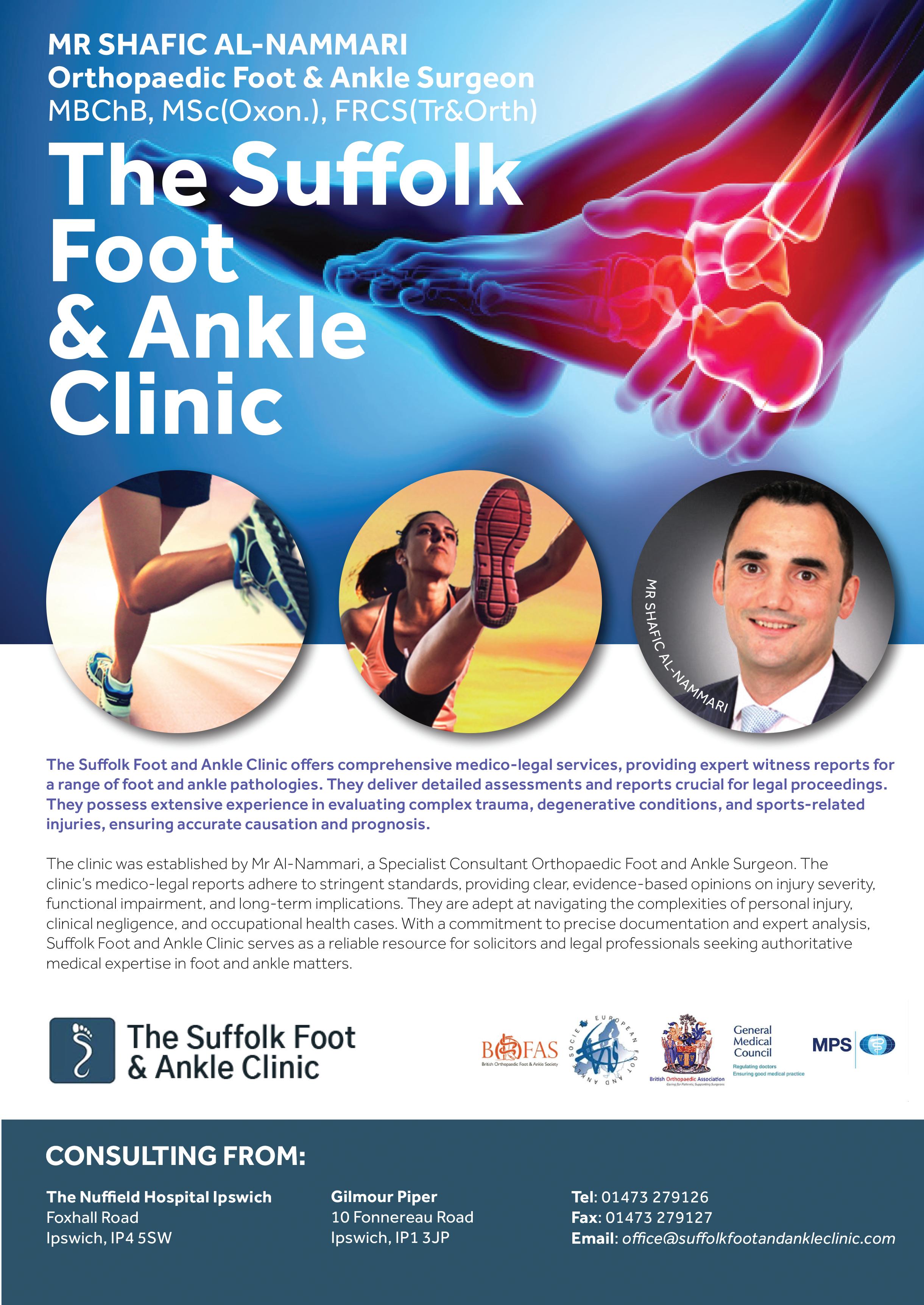

Just under one third (31%) of supporters with Wills have included a charitable gift, with legacy giving most widespread amongst younger Will-makers and volunteers, according to our annual consumer tracking study, released today.
Our consumer benchmarking study* is carried out by independent research firm OKO and surveys more than 2,000 charity donors aged 40+ to track legacy giving attitudes and behaviour. Over the last 15 years, the study, which follows Prochaska’s Stages of Change model, has tracked long-term forward movement in legacy giving from awareness through to preparation and action. The latest survey was carried out in November 2024.
Among supporters with a Will (61%), the study shows that those without children are twice as likely to have pledged a gift. Half (49%) of these supporters say they have done so, compared to 1 in 4 (24%) of those with children. However, legacy giving has become increasingly prevalent across the board, particularly for younger Will-makers.
Key findings
• Almost 1 in 3 (31%) supporters aged 40+ with a Will have already included a charitable gift
• This rises to around half (49%) of those without children
• More than half of legacy pledgers say they first wrote a charitable gift into their Will in their 40s and 50s (55%)
• Younger Will-makers and volunteers are most likely to leave a gift in their Will
Legacy giving prevalent for Generation X
Although older generations are more likely to have a Will, 34% of people with Wills in their 40s and 50s have included a charitable gift, compared with 30% of those aged 60+. Delving into when people first pledge a gift, this year’s data reveals that over half of legacy pledgers had done so in their 40s (23%) and 50s (32%), with others at an even younger age.
While this leaves great scope for change over time, it is worth hightlighting that 50% of those with a Will – and 41% of those aged over 70 – have never changed it. What’s more, supporters are four times as likely to have added than removed a charity when making changes to their Will (43% vs 11%). The majority of pledgers (67%) haven’t told the charity they have left a donation in their Will.
Lucinda Frostick, Director of Remember A Charity – the UK’s charity consortium working to grow the legacy giving market, www.snels.org.uk
says: “For the first time of running this study, we asked supporters to tell us how old they were when they wrote a charity into their Will, revealing that many pledgers include a charity at a younger age than fundraisers might anticipate. While this enthusiasm for giving amongst younger generations is greatly encouraging and bodes well for the future of the legacy market, the reality is that stewarding supporters for many decades is a challenge, particularly when so many pledgers are unknown.
“This generation of hidden pledgers emphasises the importance for charities of maintaining best practice across the board, building trust and confidence in all they do and of continuing to nurture every supporter as a prospective legator.”
Long-term rise in legacy giving
Across the study, only 8% of respondents rejected the concept of leaving a charitable gift in their Will in 2024, down from 13% in 2010. Those most likely to have pledged a gift include volunteers (29%), those who have been supported by or have fundraised for a charity (28%), and those who donate regularly (27% for weekly donors, and 25% for monthly donors).
Lucinda comments: “While legacy giving may seem – and often is – a natural progression from regular giving, the study shows that there is a strong correlation with volunteering, along with those who have benefitted from charitable services.
“This highlights the opportunity for charities to ensure that their volunteers know about the importance of legacies, how valued they are and that any such gifts can help to make a difference to the charity’s work long into the future.”
Understanding legacy giving: motivations & barriers
Key motivations for including a charitable gift include the recognition that: even a small gift can make a difference (35%); charities rely on gifts in Wills to continue their vital work (30%); and leaving a gift is a natural step after supporting charities for a long time (27%).
For those who have written a Will, but haven’t included a charitable gift, 1 in 4 simply didn’t think about it at the time. The most prevalent reason (63%) for not including a charity was that they wanted to leave everything to family and friends, while 30% said it was because they didn’t have the money or assets to leave a large amount.

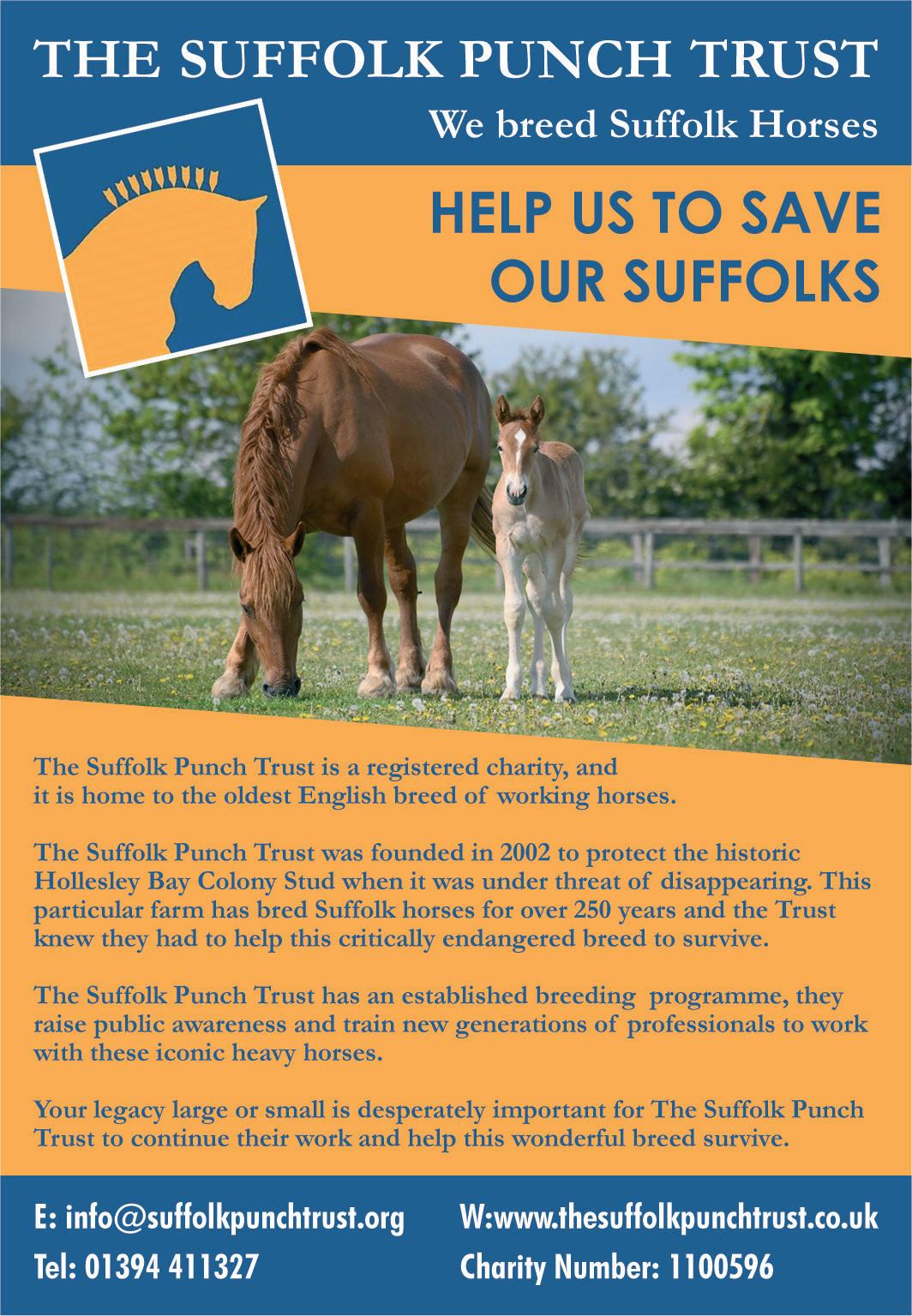







Legacy Futures (https://www.legacyfutures.com) has released key findings from its 2024 research into online wills. The study, conducted as part of Legacy Futures’ Digital Legacy Insights programme*, looked at online wills from a consumer perspective to shed light on the motivations and behaviours of those choosing to create wills online, as well as the role charities play in the space.
Almost one in ten wills made are now made online, a figure that is set to grow over the next few years as online channels become increasingly viewed as a more convenient and affordable way to make a will. For a large number of charities, online wills are being used to attract and engage would-be donors, providing an effective, scalable and measurable way to generate legacy gifts.
The research brought to light opportunities and challenges associated with the increasing popularity of online wills.
Key findings
• Nearly one in ten (9% of ) people who have created a will have done so online, and one in five who have yet to make a will plan to do so online.
• Wills made online are more likely to include a charitable gift.
• Online will makers are more likely to be younger, have a higher household income, be working, single and have children than the average will maker; however, a significant proportion are aged 65+.
• Charities’ association with online will providers and products lend credibility and trust, serving to endorse them.
Key Challenges
• Confusion exists around the role of the charity in the online will making process, with some people unsure whether they are ‘supporting’ the charity just by using the service, or believing the service is part of the charity’s provision.
• Many consumers assume that all online will products are broadly the same. When carrying out research to decide which provider to use, their focus is more likely to be on
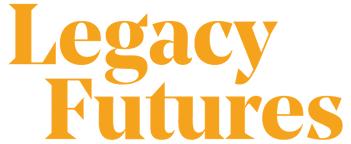
ensuring the company is reputable and that the process of making the will is smooth rather than the finer details and terms and conditions of the individual product and whether it fits their requirements and circumstances.
• The research also found that a consumer’s journey to making an online will is not linear; long time lags were reported between the initial consideration (to leave a legacy gift) and the action (to commit to the gift in a will).
• As consumers go through the online will making process, moving from consideration to execution, the visibility of the charity often reduces, with the online will provider becoming more prominent.
Anna Turner, head of research and insight at Legacy Futures, said: “These findings provide valuable insight into how consumers are using online wills and highlight their growing significance in legacy fundraising. As more people opt for digital will creation and providers enhance their offerings, this trend is set to continue, shaping the future of charitable giving through online wills. This is potentially very exciting for charities, for whom the trend presents further opportunities to garner legacy supporters.
“With younger people being increasingly digital first and more likely to turn to the internet for advice and conduct their financial affairs online, it is likely that a significant proportion of new people entering the will making market will gravitate towards an online option.”
Considerations for charities
• The research flagged areas for charities to be aware of when forming online will partnerships and promoting this service.
• Clarity and transparency: charities need to be clear about their offering, why they are offering it and their role in the process, so consumers understand their motivations and how to support them.
• Optimising the potential for gifts: given that online wills are attracting a larger proportion of younger consumers, charities need to consider how to effectively steward supporters over a longer period.
• Managing risk: as consumers are more likely to trust an online will provider due to its association with a charity, charities must make sure that they understand the finer details of each of the products and that their chosen partners are offering quality, ethical and compliant products.
Download the public briefing
The Digital Legacy Insights 2024 public briefing can be viewed here**. (The full research findings are available to programme members only).
*https://www.legacyfutures.com/services/legacy-foresight/ research/digital-legacy-insights/
**https://www.legacyfutures.com/resources/online-willsthrough-the-eyes-of-the-consumer/

